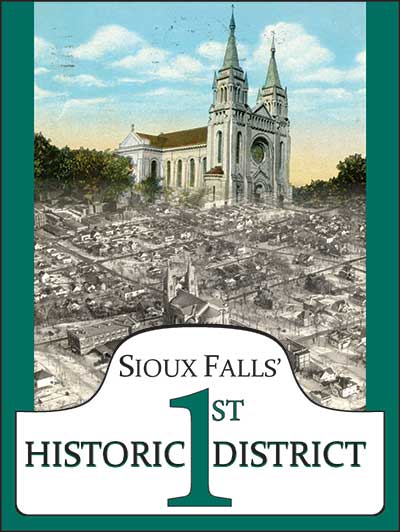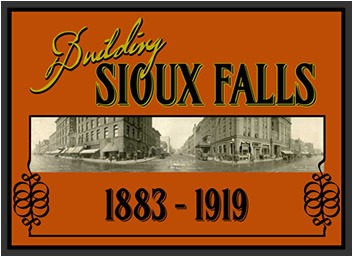
Sioux Falls 1st Historic District
Nestled in what is known as the North End, the Cathedral Historic District is one of Sioux Falls’ earliest and most well-preserved residential areas. Many of the striking homes and iconic buildings in the neighborhood were built between 1871 and 1925 for some of the city’s most well-known and successful residents. However, after World War II the neighborhood was at risk of losing its historic value. Sioux Falls’ population boomed from the late 1940s into the 1960s. Some homes were converted into apartments, and other buildings were torn down to make way for modern multi-family housing units. Something had to be done to preserve the neighborhood’s history. Thanks to the 1966 National Historic Preservation Act, local government boards, and community members, the Cathedral District was placed on the National Register of Historic Places in 1974.

Building Sioux Falls: 1883-1919
From a young city with boundless resources in 1884 to a growing metropolis in 1919, the city of Sioux Falls was an economy that was greatly diversified. The ambition of adventure and wealth brought people to the young city who were lured by promise and prosperity. The once feeble structures created from wood were replaced by multistoried structures that defined the Sioux Falls skyline. The growing community filled city blocks and became the economic and industry leader in South Dakota. Sioux Falls steadily increased the strength of its position as the financial, commercial, educational, legal, religious and political center of the state.

A Cabinet of Curiosities
A Look at Sioux Falls’ First Museum recreates a vignette of the museum Richard Pettigrew built in 1923, exhibiting artifacts originally displayed in his museum. Mr. Pettigrew’s museum was a conglomeration of objects collected in local archaeological excavations with his brother Fred, objects collected on his travels around the world, and objects traded with other collectors and researchers worldwide. Displaying intriguing pieces such as a walrus skin kayak, prehistoric stone tools, geological specimens, historic guns, and original photos, the exhibit portrays an earlier type of museum, one that showcased objects for their uniqueness rather than as interpretative tools used for educational purposes.
